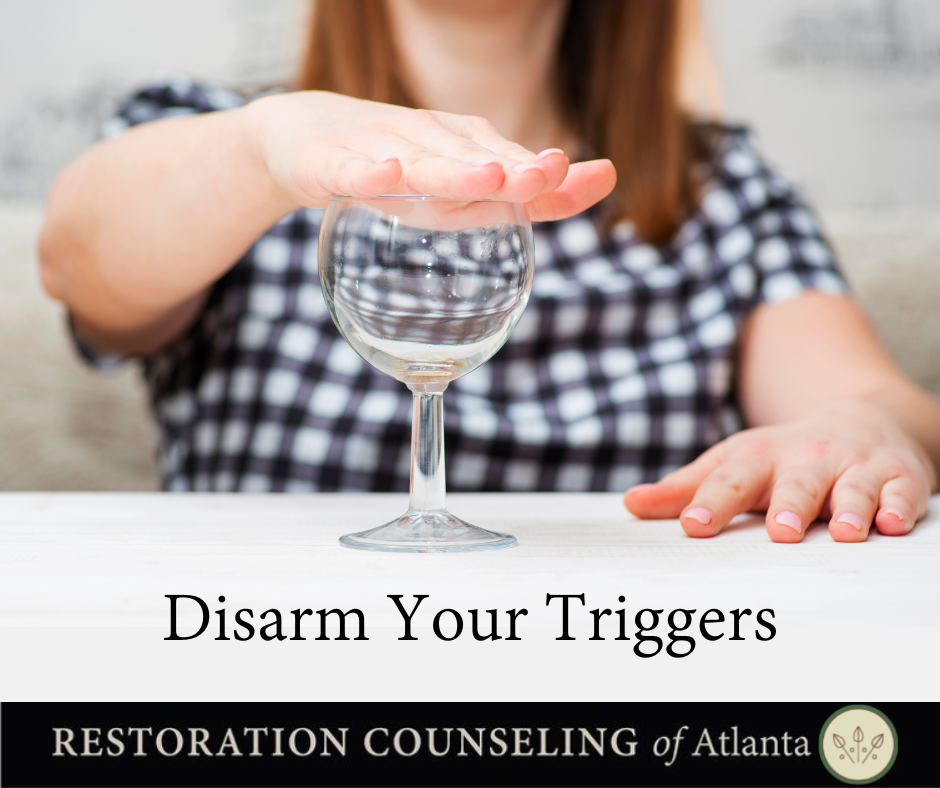Changing unwanted behavior is difficult. If you have ever tried to stop using alcohol or drugs, viewing pornography, overeating, or gambling, you know what I mean. You decide that you want to stop. You know that it is good for you and those around you. Then you muster up the courage and resolve. You put a plan in place, take action to stop, and it works for a few days, weeks, or even months. Then, something happens. In a moment of weakness, you experience triggers, uncomfortable feelings, and a magnetic urge to use, and you are powerless. You do exactly what you do not want to do. Your plan is foiled, and you are defeated.
You need a good plan.
You desire to reach healthy goals and live according to your values, but your own brain betrays you. This betrayal is bewildering, yet so prevalent in the human experience that even the apostle Paul describes it in Romans 7:15 “I do not understand what I do. For what I want to do, I do not do, but what I hate, I do.” If you are nodding your head knowingly, I want to encourage you – there is hope. Managing triggers and urges and healing from addiction and unwanted behaviors is difficult, but God has provided us with a path to recovery and tools to use along the way. One of these tools is the Desensitization of Triggers and Urge Reprocessing (DeTUR™) protocol.
What is DeTUR™?
The protocol is very much like Eye Movement Desensitization and Reprocessing, a highly effective trauma treatment. It is different in that EMDR targets past trauma, and the DeTUR ™ protocol targets the triggers and urges that maintain addiction and unwanted behavior. Reprocessing using DeTUR helps people better manage triggers and urges as they try to abstain or change behaviors. It also helps to prevent relapse. While processing triggers and urges, it is common for the trauma that fuels addiction to come into awareness. When this happens, the trauma is explored and reprocessed using EMDR, which leads to increased well-being.
DeTUR ™ is a small but powerful component in the comprehensive treatment of addiction and unwanted behavior. The DeTUR treatment protocol can be used online or in person by a counselor trained in EMDR and DeTUR™. It is a multi-step organized process. I describe the important aspects below, so you will know what to expect if you choose to add DeTUR to your healing journey.
1. Relationship
It’s important to have a good relationship with your therapist. An open, honest environment is the best healing. Do you trust your therapist? Do you feel safe? Are you comfortable communicating openly and sharing your emotions? Before proceeding with any therapy, ensure you feel comfortable in your relationship with your therapist and ready to proceed. If you don’t, take time to explore why. Ask questions and provide feedback to your therapist. Ensure you are comfortable with your therapist and the process.
2. History
Your therapist will take time to learn your history. Ensure that you feel understood and known before starting the process. Your therapist will ask you to share information about your family and extended family, medical history and medications, mental health, substance use, addiction history, prior therapy, spiritual beliefs, likes, and dislikes.
3. Exploration of External Support
It is important to have a person or group outside the therapeutic setting where you can express your feelings, thoughts, and fears -someone to call when things get difficult and a nonjudgmental place where you can feel heard. Before processing triggers, you and your therapist will explore the support you have or help you find the support you need during the recovery process.
4. Empowerment
Remembering strengths and prior victories will help you learn to shift your emotions. Your therapist will help you explore times in your life when you were successful at meeting goals or feeling empowered. During this exploration, the therapist may ask you to watch a ball bounce back and forth across a screen, listen to beeping in headphones, or ask you to tap your arms in a “butterfly hug.” This is called bilateral stimulation. Bilateral stimulation alternately activates the left and right hemispheres of the brain and enhances a person’s ability to learn and process information. The therapist will then ask you to give the empowering memory a name to refer to later.
5. Treatment Goal
It is important that you develop a clear vision of your treatment goal. You and your therapist will explore the goal in detail and discuss what achieving it will mean for your life. Your therapist may choose to use bilateral stimulation at certain times when talking about the goal.
6. Feelings Associated with the Goal
After you are clear about your goals, you will imagine the feelings associated with achieving the goal. You will explore the imagined experience with your therapist, and when you can “feel” the achievement, your therapist will ask you to squeeze a knuckle to “anchor” the experience. After practice, this knuckle squeeze will help you recall the positive physiological response associated with the goal.
7. Identification of Triggers
Once your goal is clear, you will work with your therapist to identify the triggers that bring up the urge to use or engage in unwanted behaviors. The triggers may be places, people, times, smells, actions, objects, memories, or sensations -anything that is associated with whatever you notice when you get the urge to use. You will also work with your therapist to rank the triggers.
8. Desensitization of Triggers
After identifying triggers, your therapist will help you desensitize them using bilateral stimulation. You will measure progress by reporting the trigger’s Level of Urge (LOU) on a scale of 0-10, where 0 is no urge, and 10 is the highest urge imaginable.
During the process of desensitization, you will notice the urge and the image and sensations associated with the urge as you engage in bilateral stimulation. After a set (a series of eye movements or other methods of bilateral stimulation), your therapist will ask you what you notice. During the process, you will be looking for change – change in sensations, level of urges, images, thoughts, or emotions. You will report what you notice, and your therapist will document what you say, and you will begin another set of bilateral stimulation. Then you and your therapist will repeat the process until the level of urge decreases to 0. You and your therapist will repeat this process for all the urges identified in step 7.
9. Linking of Feelings Associated with the Goal
Linking the image of the trigger to goal-related feelings rather than the urge to use is an important part of cutting the cord that ties triggers to uncomfortable feelings. Your therapist will ask you to think about the image of the triggering urge and the positive feelings associated with your goal. You will then squeeze your knuckle, as in step 6, while the therapist uses bilateral stimulation.
10. Testing
During this phase, you will imagine a scenario where you experience the trigger and successfully handle the situation. If you experience difficulties, your therapist will continue bilateral stimulation until you can imagine the situation and handle it according to your goals.
11. Closure and Follow-up
After DeTUR ™, your brain will continue processing. Your therapist will ask you to note any additional triggers, urges, or related thoughts that arise between sessions. During this time, it will be important to stay connected to support resources and return to counseling for follow-up sessions that continue to address the impact of addiction and unwanted behavior.
To see if DeTUR™ is a good fit for your needs, email andrea@restorationcounselingatl.com for a free 10-minute consultation.
Resources
 Written by Andrea Brandt, NCC, APC
Written by Andrea Brandt, NCC, APC
andrea@restorationcounselingatl.com, ext. 154
Providing Online Therapy
Andrea Brandt works with adults who desire freedom and healing from the impact of addiction, obsessive-compulsive disorder, anxiety, and depression. She uses EMDR to help clients reduce the urge to engage in behaviors that they want to stop, and she treats the underlying trauma and beliefs that fuel unhealthy behaviors and thinking. On the journey toward healing, Andrea guides clients in understanding and managing emotions, creating, communicating, maintaining healthy boundaries, and growing in healthy relationships. Andrea has specialized training in EMDR, Addictions, and Exposure and Response Prevention. She sees clients via telemental health from her boat-office, Knot 2 Late, and believes that it is never too late to embrace change, heal, and grow.

